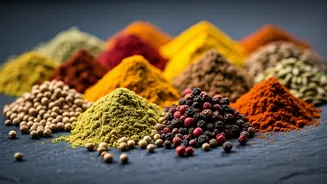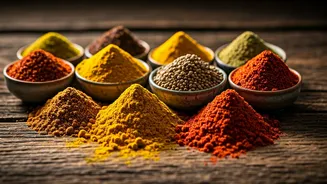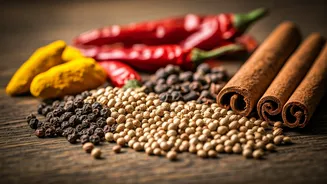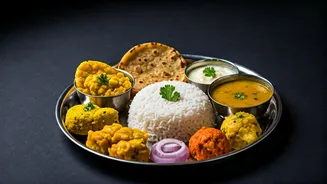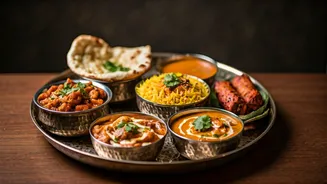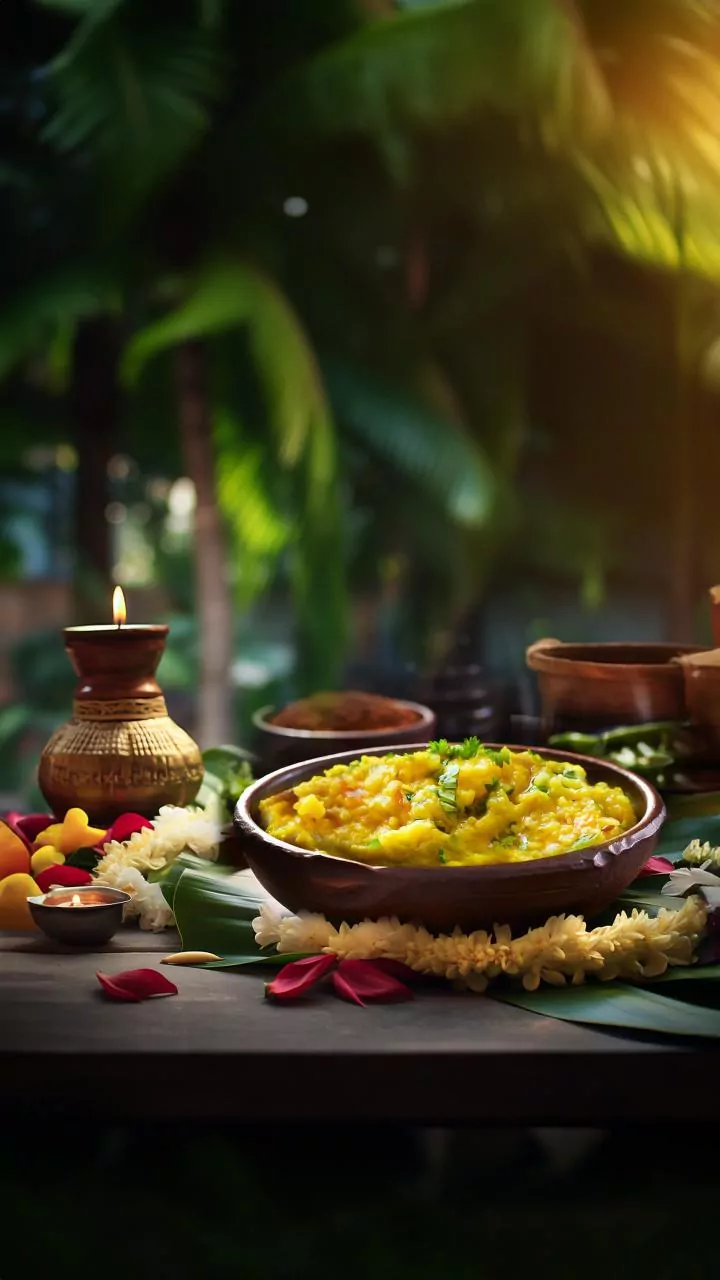Spice: The Essence
The soul of Indian food lies in its spices. Each region boasts its own unique blend, creating a symphony of tastes that dance on your palate. Turmeric,
with its earthy notes and vibrant color, is a staple, known not only for its flavor but also for its health benefits. Cumin adds warmth and depth, while coriander offers a citrusy freshness. Chili peppers bring the heat, balanced by cooling ingredients like yogurt and tamarind. The skillful use of these spices is what makes Indian food so distinctive. This intricate balance is what sets Indian cuisine apart, transforming simple ingredients into extraordinary dishes.
Regional Cooking Styles
India's diverse geography has significantly shaped its culinary landscape. In the north, rich, creamy curries dominate, often featuring nuts, dairy, and the influence of Mughlai cuisine. Think of butter chicken, a globally beloved dish, or the slow-cooked perfection of nihari. Moving south, coconut milk, seafood, and a lighter touch of spices come into play. Coastal regions offer an array of fresh fish curries, tangy tamarind-based dishes, and the use of rice as a staple. The east showcases the sweet-and-savory combination with Bengali sweets and the use of mustard oil. The west presents a blend of flavors, from the spicy vindaloos of Goa to the Gujarati thalis, creating a delightful diversity.
Cooking: Techniques & Traditions
Indian cooking involves a range of traditional techniques. Tandoor ovens, used for centuries, impart a smoky flavor to meats and breads like naan and roti. The art of tempering spices in hot oil, known as tadka, releases their aromatic oils, intensifying the flavors of a dish. The slow-cooking methods of dum pukht allow flavors to meld together over time, resulting in tender, flavorful preparations. The use of a mortar and pestle for grinding spices allows for the full release of aroma. Furthermore, the concept of a balanced meal (thali), consisting of a combination of textures and flavors, has been a part of Indian food culture for ages. It provides a complete and satisfying culinary experience, incorporating various food groups for a well-rounded diet.
Vegetarian Delights Abound
Vegetarianism is an integral part of Indian culture, leading to a vast array of plant-based dishes. Lentils (dal) are a cornerstone, cooked in various ways to create creamy, comforting curries. Vegetables are celebrated, from the simple aloo gobi (potato and cauliflower) to the complex paneer dishes. Spices are masterfully used to transform even the most basic vegetables into culinary masterpieces. For example, baingan bharta, a roasted eggplant mash, is cooked with spices and herbs, and provides a rich and smoky flavor. Vegetarian options are available everywhere and are a testament to India's commitment to culinary diversity and catering to all tastes. This commitment means many vegetarian choices.
Sweet Endings: Desserts
No Indian meal is complete without a touch of sweetness. The desserts, like the savory dishes, show the diversity across regions. Gulab jamun, deep-fried milk balls soaked in syrup, are a classic favorite. Rasgulla, soft cheese balls immersed in syrup, offer a delicate sweetness. Kheer, a rice pudding infused with cardamom and nuts, provides a comforting end to any meal. Barfi, fudge-like sweets, come in many flavors. These desserts are not just for satisfying a sweet tooth; they are a vital part of celebrations, festivals, and the Indian love of sharing. The variety showcases the skill of Indian chefs and the creativity within their food culture.


